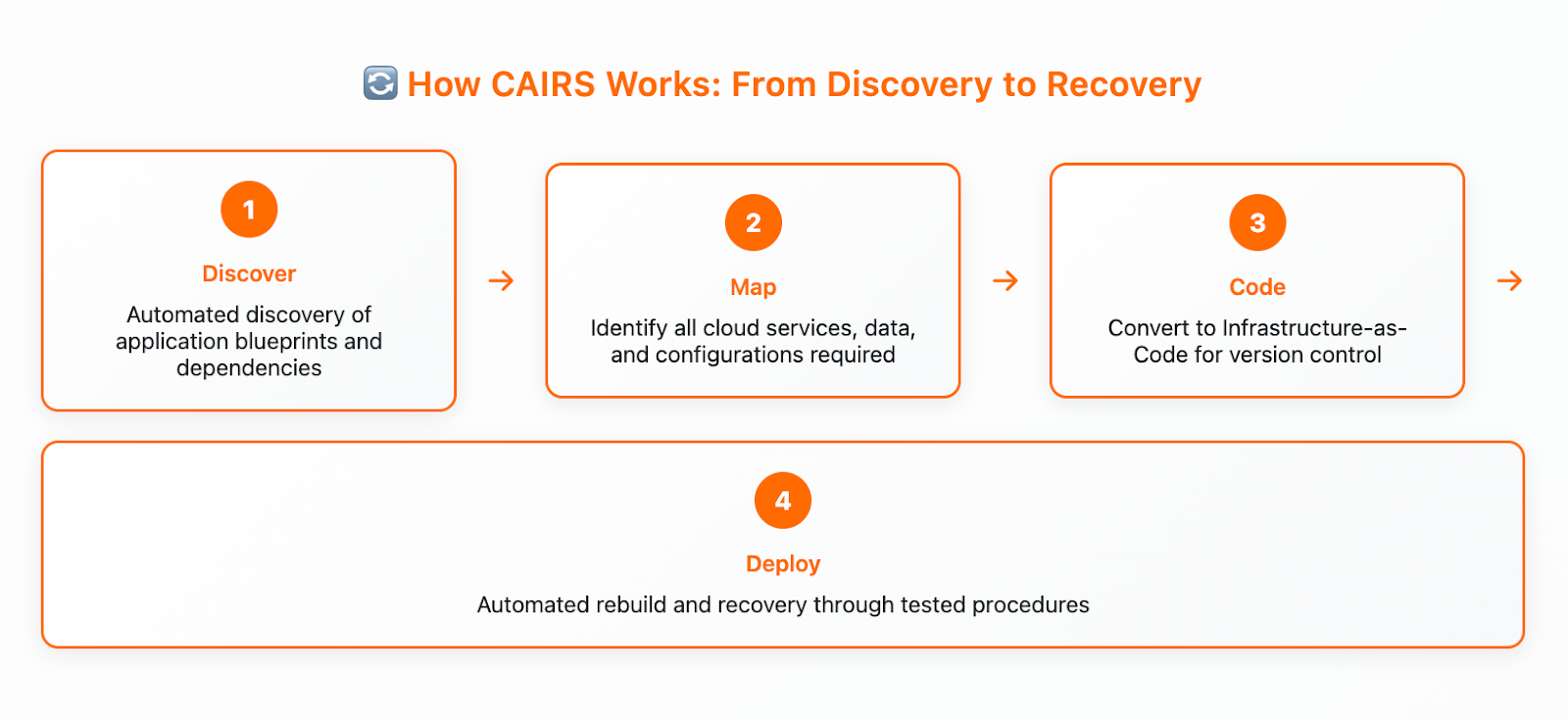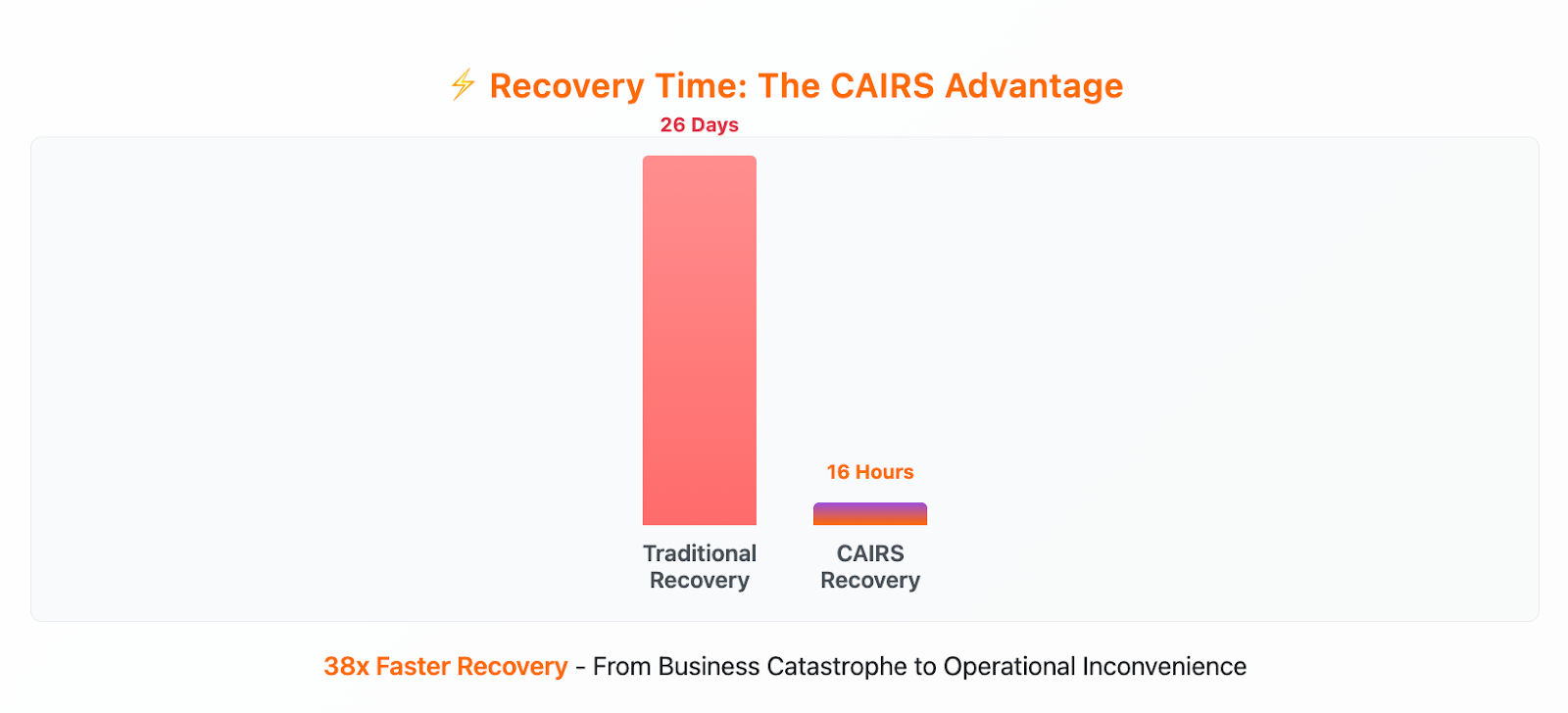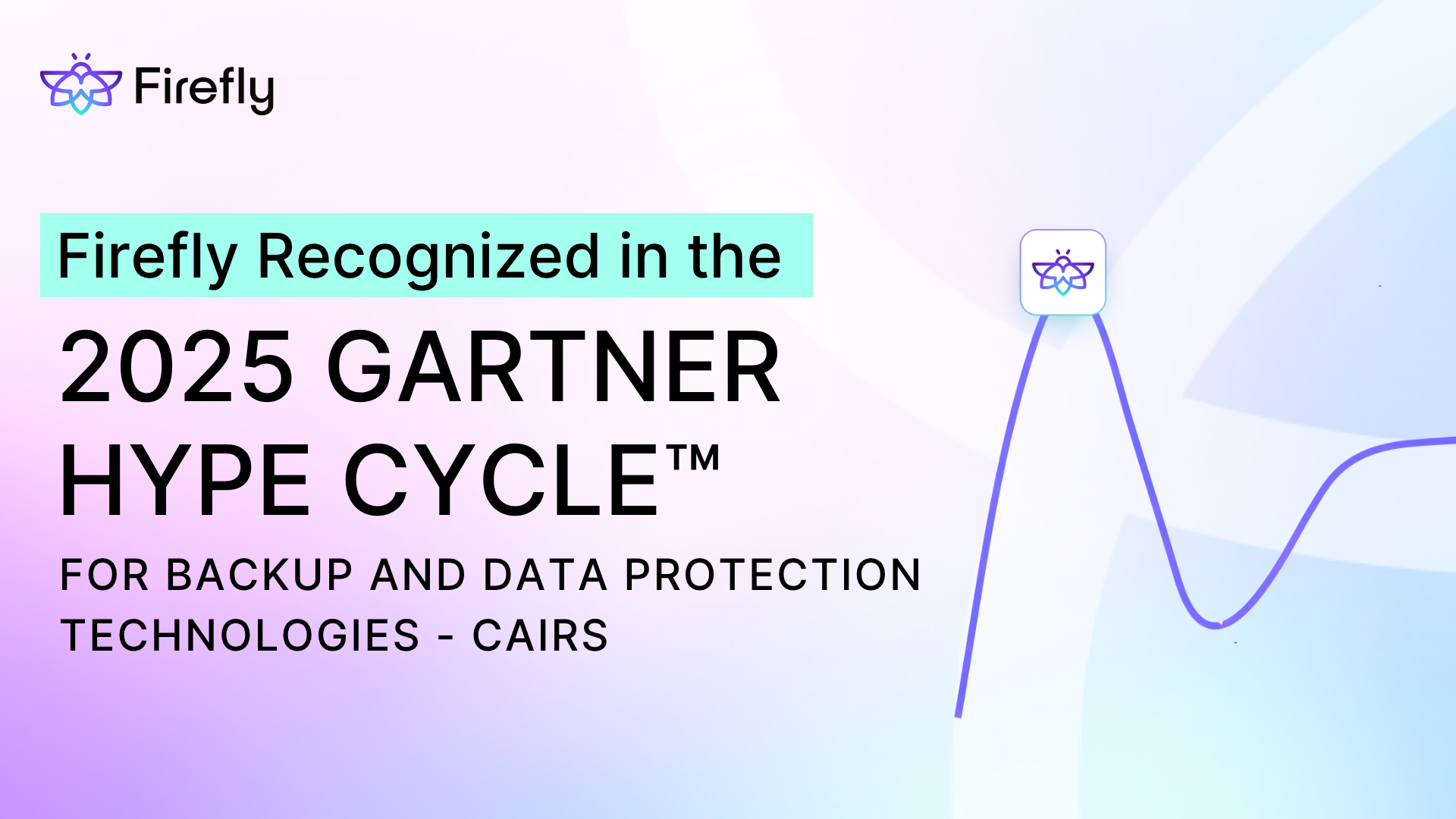The enterprise backup industry just got a reality check, and most organizations don't even know it yet.
Gartner's Hype Cycle for Backup and Data Protection Technologies, 2025 introduced something unprecedented: Cloud Application Infrastructure Recovery (CAIRS), an entirely new category that exists because traditional disaster recovery has catastrophically failed in cloud environments. Plus, Gartner introducing a category and an acronym so quickly underscores just how rapidly and fundamentally this new development is shaping the cloud backup landscape.
In essence, Gartner is calling out a widespread market failure. While data backup is largely a 'solved problem', ensuring business continuity (and your ability to use that data) is a problem that is only getting worse for cloud infrastructure. To support your data backup, you need to ensure that you have backup and restore capabilities for your cloud infra, too.
Here's what makes this significant: Gartner only recognized three vendors in this space. Three. And notably, in an industry filled with hundreds of backup solutions, Firefly made the cut for comprehensive cloud infrastructure recovery.
That's not market consolidation. That's market failure.
Why Your Million-Dollar Backup Strategy Ignores 90% of Your Infrastructure
Gartner's research exposes the fundamental flaw in enterprise disaster recovery: "Cloud and third-party backup tools typically protect only the underlying data of an application, but not all dependent cloud services."
Organizations spend millions on backup solutions that capture databases and file systems while completely ignoring the auto-scaling groups, load balancers, security policies, and network configurations that actually make applications function.

When MGM Resorts faced ransomware, the issue wasn't data recovery — it was infrastructure rebuilding. The attack cost them $8.4 million per day because having clean data backups meant nothing without the ability to recreate the complex infrastructure required to serve customers.
This isn't an edge case. It's the new reality of cloud infrastructure attacks, and traditional backup is fundamentally inadequate.
A Look at the Problem CAIRS Solves
Cloud Application Infrastructure Recovery treats infrastructure as software that can be reliably recreated, not data that can be restored.

CAIRS solutions "automate the discovery of application blueprints to identify the dependencies of all cloud services, data and configurations required to rebuild, replicate and recover applications." This shifts from hoping backups captured everything to knowing infrastructure can be rebuilt from tested code.
- Traditional disaster recovery asks: "How do we restore our systems?"
- CAIRS asks: "How do we rebuild our systems better?"
Numbers Don't Lie: The True Cost of Infrastructure Recovery Failure
A large Accenture client reduced recovery time from 26 days to 16 hours by switching to Infrastructure-as-Code-based recovery: a 38x improvement that transforms disaster recovery from business catastrophe to operational inconvenience.

With cloud spending growing by 20%+ annually, infrastructure dependency is exploding, while management capabilities lag behind. Organizations that can't recover from infrastructure failures quickly won't survive the next major incident.
The regulatory landscape is also shifting. Auditors are scrutinizing cloud infrastructure disaster recovery capabilities, and cyber insurers are incorporating infrastructure resilience into underwriting. Organizations with comprehensive recovery capabilities demonstrate lower risk profiles, while those relying on traditional backup face higher premiums.
Three Standouts: Why So Few Vendors Made the Hype Cycle
The technical barriers explain why only three vendors made Gartner's list.

Multi-cloud complexity requires deep integration across AWS, Azure, GCP, and dozens of SaaS platforms: engineering investments most backup vendors haven't made.
Traditional backup vendors think in terms of files and databases. CAIRS requires understanding that auto-scaling groups aren't "data" to be backed up, but operational patterns that must be recreated through deployment procedures.
Converting live infrastructure to clean, executable Infrastructure-as-Code demands sophisticated reverse-engineering capabilities that few vendors possess. Real-time synchronization between live infrastructure and code representations presents complex challenges requiring advanced change detection systems.
The DR-as-Code Revolution
DevOps teams are shifting more resources to practice DR-as-Code. But why? Because having full infra configuration backup in IaC ensures that it can be easily and quickly restored. With CAIRS, this can all be achieved with a robust solution for DR-as-Code.
Traditional approaches hope backups capture everything and follow manual recovery procedures. DR-as-Code codifies infrastructure as executable blueprints, tests recovery continuously, and guarantees reproducible results through automated deployment.
When infrastructure exists as version-controlled code, recovery becomes deployment. Configuration problems become pull requests. Disaster response becomes automated procedures tested hundreds of times rather than emergency manual processes.
Time to Lead the Infrastructure Recovery Evolution (or Pay to Catch Up Later)
Gartner's creation of the CAIRS category signals the beginning of a broader transformation toward comprehensive infrastructure automation platforms that treat recovery as deployment and infrastructure as software.
Organizations that understand this shift will establish operational advantages that separate market leaders from laggards. Those continuing to invest in traditional backup solutions will find themselves disadvantaged by complexity and reliability challenges that automation platforms solve elegantly.
The transformation isn't coming. It's already here. The question isn't whether cloud disaster recovery will evolve. The question is whether your organization will lead this evolution or be forced to catch up later at much higher cost. With Firefly, you get the leading solution for CAIRs and DR-as-Code — with capabilities enhanced with AI for intelligent and resilient cloud infra management.



